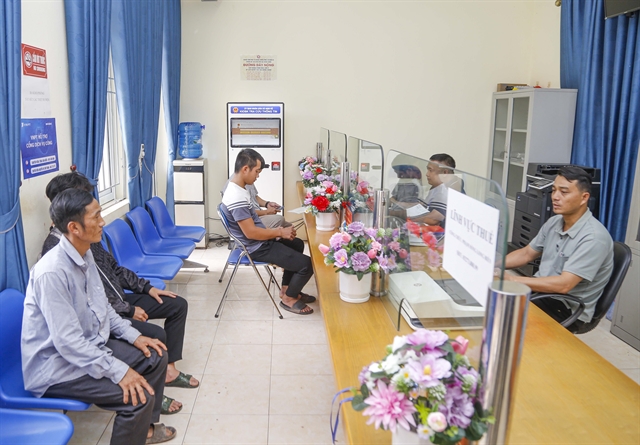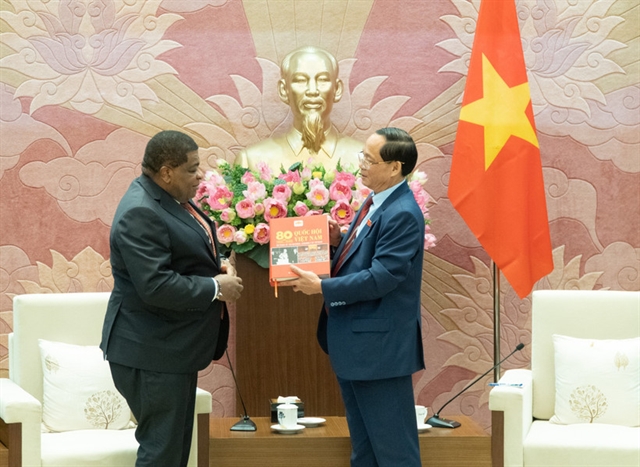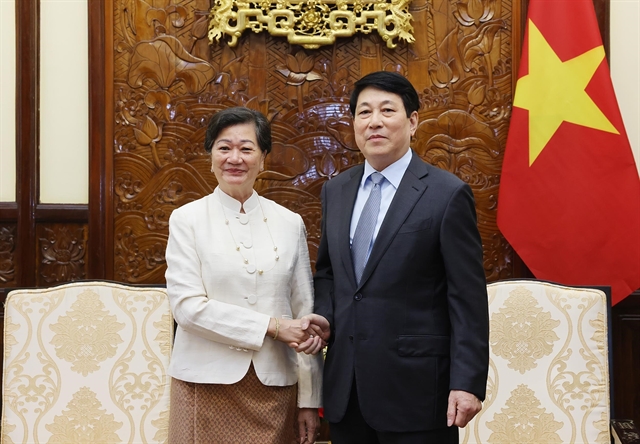 Society
Society


|
| Residents from the Hà Nhì ethnic community visit Sín Thầu Commune's public administrative service centre for procedures. VNA/VNS Photos Trung Kiên |
ĐIỆN BIÊN — The implementation of the two-tier local government model in border communes is not merely a reorganisation of administrative structures, but represents a major test for grassroots authorities.
Like many other places in Việt Nam, the two-tier local government model was officially rolled out across the mountainous northern province of Điện Biên on July 1.
In remote border communes where infrastructure remains underdeveloped and poverty rates are high, initial steps in operating the new system have already shown the proactive engagement and strong determination of local officials and civil servants.
Sín Thầu, an exceptionally difficult-to-access border commune in the mountains, was established through the merger of three former communes.
The commune holds strategic importance for national defence and foreign relations, due to its location at Việt Nam’s westernmost point bordering Laos and China.
Following the merger, Sín Thầu became the largest commune by area in Điện Biên Province and the most remote from the provincial administrative centre, at a distance of over 230km.
Currently, the commune comprises 21 villages with over 1,300 households and more than 6,100 residents from four ethnic groups, of which the Hà Nhì minority accounts for over 51 per cent.
Sín Thầu has nearly 100 officials and civil servants, along with 35 part-time staff, however, infrastructure remains extremely limited.
Meetings with over 25 participants must be held in a local school hall.
Part of the administrative headquarters is temporarily housed in an old cultural centre, divided into seven small rooms serving as offices for over 50 staff members from various departments.
Despite cramped conditions, intense heat, a lack of equipment and no privacy, the local government apparatus continues to function consistently each day.
Lưu Bá Thượng, an official at the Office of the People’s Council and People’s Committee of Sín Thầu Commune, said: "Our infrastructure is really struggling. More than 50 of us are working in a hot and cramped cultural house. Still, we’re committed to ensuring the smooth operation of the government without disruptions."
With no official housing provided, over 60 officials must travel up to 30km from their residences to the commune office each day.
There are no rental accommodations nearby.
At midday, many officials nap at their desks to recharge and continue their work.

|
| Administrative procedures being processed at Nậm Kè Commune's public administrative service centre. |
Nậm Kè, another border commune located about 170km from the provincial administrative centre, was created through the merger of the former Nậm Kè and Pá Mỳ communes.
It currently has over 80 officials and part-time staff.
The population is predominantly Mông (61 per cent), with a poverty rate of 46 per cent. Residents still face many obstacles in accessing transportation, healthcare, education and information.
The commune has repurposed a cultural house as an office for the Culture Department and Integrated Services Centre.
A temporary wooden structure is being used as office space by mass organisations.
The lack of government housing remains a pressing issue, forcing most staff to find private rentals or stay in makeshift accommodations such as schools, residents’ homes or spare office rooms, none of which meet long-term living or working standards.
Chairman of Nậm Kè Commune People’s Committee Nguyễn Tiến Thành said: “In the first days after the merger, we faced a host of difficulties — from a shortage of skilled personnel to inadequate infrastructure and equipment. In particular, working space for staff was very limited and often uncomfortable."
Implementing the two-tier government model in hardship-stricken communes like Sín Thầu and Nậm Kè goes far beyond administrative restructuring.
It puts to the test the dedication, perseverance and adaptability of grassroots authorities.
Officials are learning as they go, taking on extra responsibilities and finding ways to overcome challenges to keep operations running smoothly.
While residents were initially sceptical, they are beginning to notice improvements in service delivery and administrative efficiency.
At the Sín Thầu Commune Public Administrative Service Centre, after three weeks of operation, 54 administrative procedures had been received and processed, with more than 40 procedures handled online.
The centre's staff have maintained uninterrupted service for local residents and businesses.
Mạ Sé Nu, a resident of Suối Voi Village, visited the centre to complete paperwork for her child.
She said the officials were very helpful and thorough.
“Now we can do paperwork right here in the commune — no need to travel far like before. I didn’t know how to ride a motorbike, so I used to dread going. Now it’s within walking distance."
Nậm Kè Commune’s Public Administrative Service Centre receives dozens of residents daily.
Local officials not only perform their usual duties, but also actively assist citizens with forms and procedures.
Hồ Văn Quyền, a resident of Nậm Kè Village, was pleased after registering his child for social benefits.
"The staff were welcoming and gave clear, efficient guidance. It only took half a morning. It used to be much more complicated and required multiple trips. Now it’s so much more convenient,” he said.
Thành said despite ongoing challenges, the local Party committee and government have proactively implemented timely solutions to ensure smooth operations. The Public Administrative Service Centre is running effectively, and staff are actively supporting residents without service interruptions.
Party Secretary of Sín Thầu Commune Đặng Thành Huy said that from the outset of the new commune’s establishment, its leadership and staff demonstrated unity and determination to overcome difficulties and operate the new government system smoothly and efficiently.
According to Huy, although the new model sets high expectations, especially in border regions, it also provides a great opportunity to gradually modernise local governance.
“With strong community support and committed officials, it is possible to achieve lasting, positive change,” he said. — VNS




